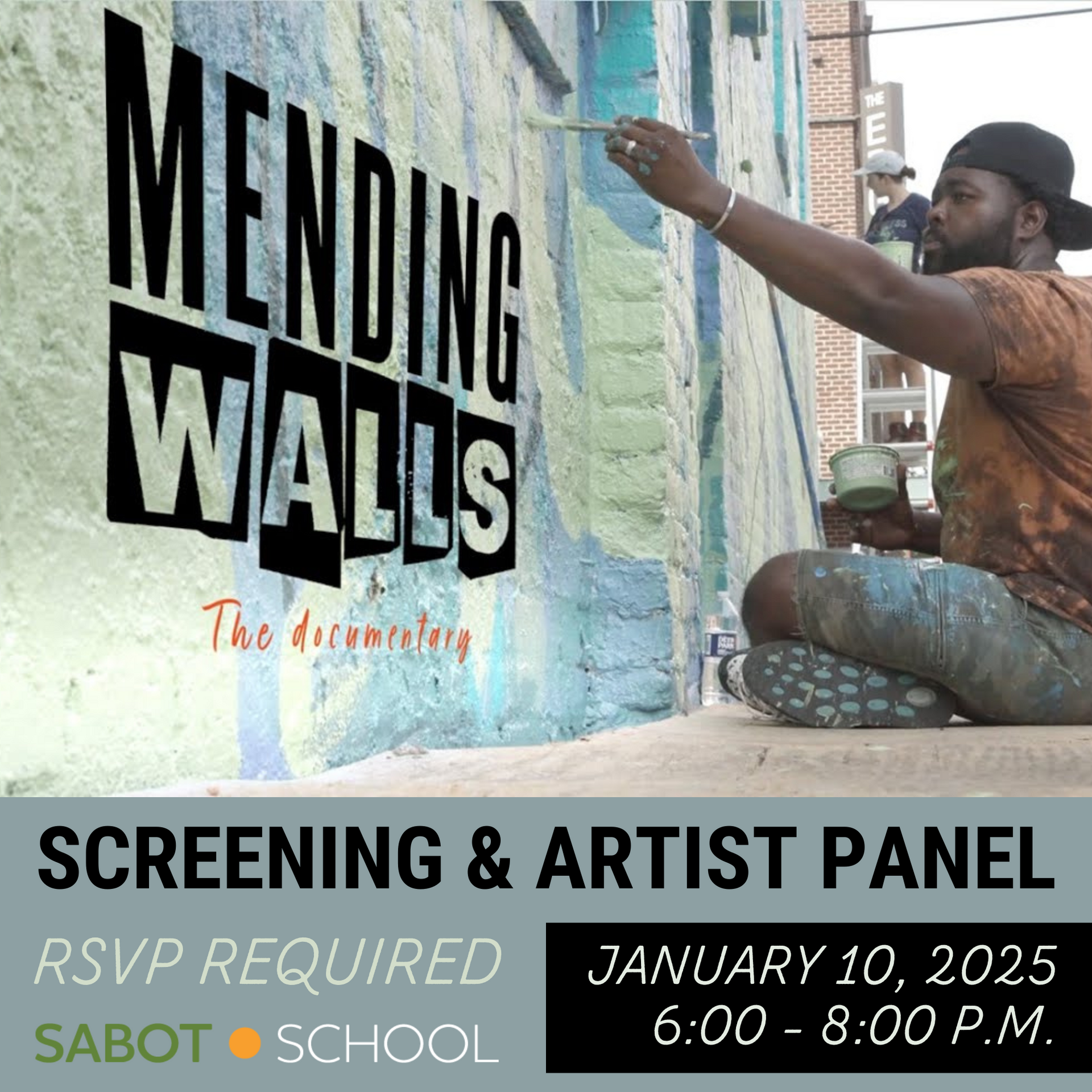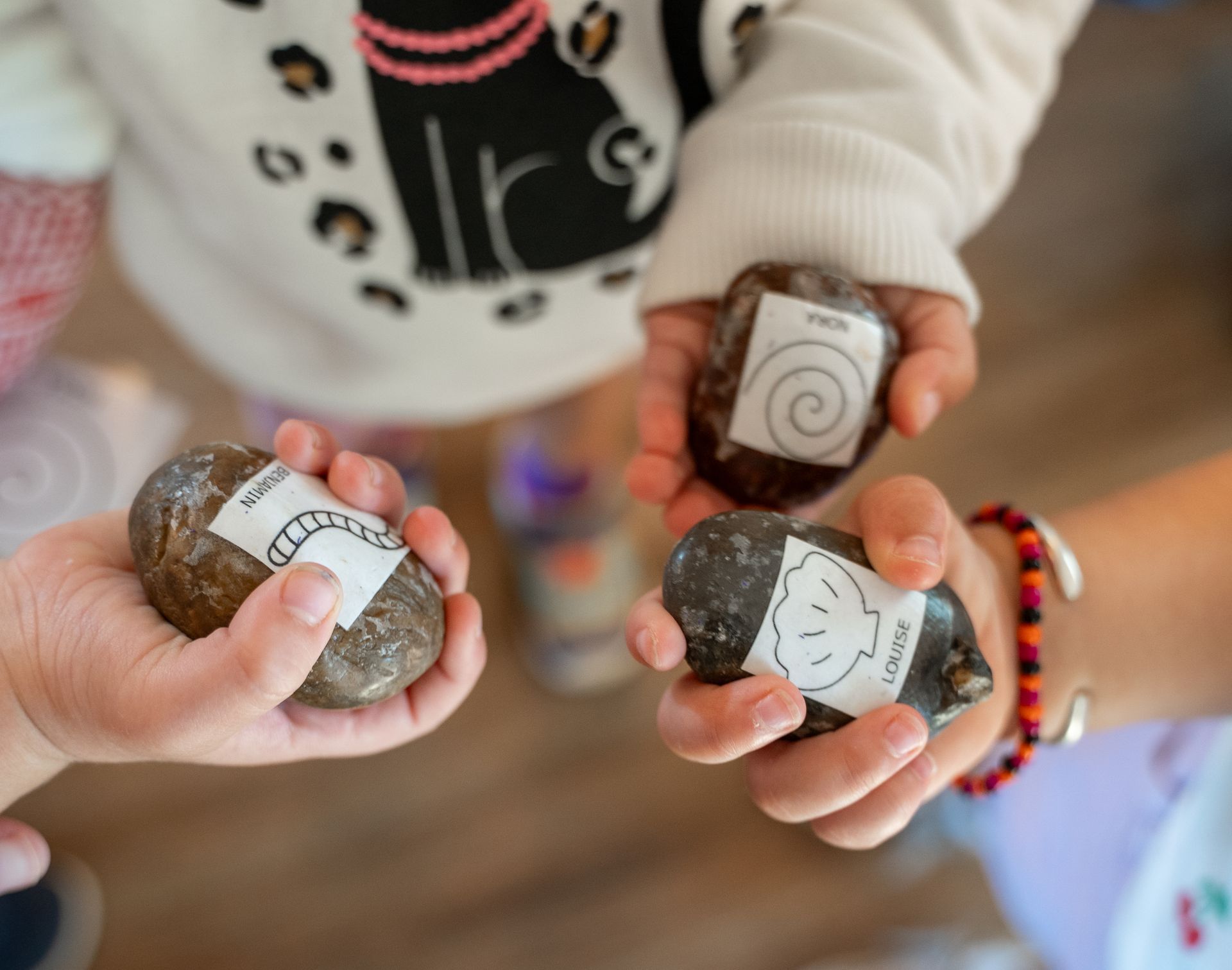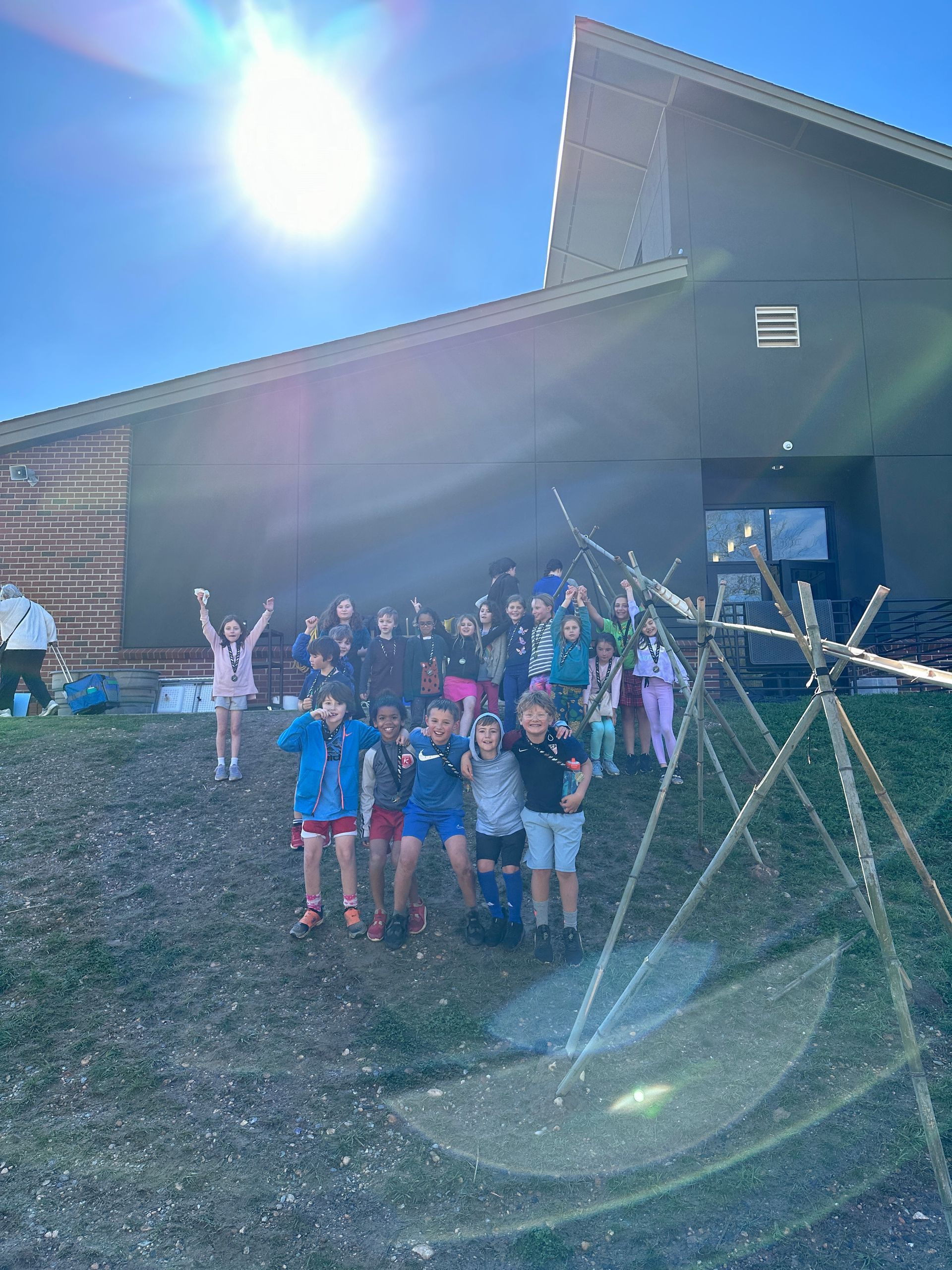Moving Into Movement: Part II
Our Lower School Director and Pedagogista Susan Barstow offered up several provocations to the children to generate more thinking about the physical processes involved in movement – a Newton’s cradle, a brachistochrone, an hourglass, and glitter jar. As they split into groups, we asked the children to sit and notice each object, discuss how the object works (or how they guessed they might work), sketch the object, and then interact with it. The temptation to play with the objects right away was irresistible, but this intentional slowing down allowed the children to establish relationship with the objects and share their theories about what forces might be observed. Then, once they had a chance to play with the objects and make additional observations, they would have the opportunity to discuss their initial theories and postulate new ones.
HOURGLASS AND GLITTER JAR

We flip the glitter jar and the hourglass at the same time to see which would settle first. The glitter jar won. The children estimate how much time it would take for the hourglass to empty. Ten minutes? Five minutes? A minute and a half? Using a stop watch, they see that it takes approximately three minutes.
- Max H: [If you turn the glitter jar] the water keeps the glitter up, but not forever. Glitter is not all that heavy. If you had rocks in the jar, they would sink right down.
- Hunter: An hourglass isn’t better than a clock. A clock can tell the hours, minutes, and seconds. This can only tell minutes.
The children consider why an hour-glass has two chambers and not one. They notice that an hourglass only lets a little bit of sand go down at a time, much better suited to measure time instead of a large cylinder of sand turned upside down.
- Neil: [The hourglass] only lets three to five grains of sand through at a time.
- Hunter: When you flip it over, the sand gets pulled down to the other side by gravity.
- Nicole: What do you think would happen if we put the hourglass on its side?
- Graeme: Gravity can’t go sideways. It can only go down.


NEWTON’S CRADLE
- Robbie: Force is like pressure. Two things pushing together.
- Xander: The balls are kind of magnetic. They stick together when they’re just hanging down. You pick up a ball, then drop it down, and it hits the other balls, [but] they don’t just move all over the place. They just go back and forth because of the force.
- Ada: I think that if you pull one ball back, it will hit the other three balls in the middle and the last ball [in the row] will go out and then back in again. It shows that if something hits a lot of other things, force can make the other things go.
- Juliette: Once you pull the ball up, gravity pulls it back down and then all the balls that it hits move to the other side.
- Lila: The movement moves through the balls.



Some of the children’s observations:
- Pulling back the first two balls to see what happens: the fourth and fifth balls go flying together.
- Pulling and releasing two on the left and two on the right simultaneously: (Xander: The whole thing goes crazy!) The same thing happens if you release one on each side at the same time, and if you pull the first ball up too high.
- Neil: The strings [on the balls] have to be pulled tight. If you hold the ball up and the string is too loose, it won’t work. If it’s not tight, the strings get tangled.
- Lila: Because the balls are attached with strings, the balls will all go in one direction. The strings are spread out evenly, so that the balls aren’t too close together or too far apart.
BRACHISTOCHRONE
A brachistochrone is a set of two ramps – one straight and one curved. When two balls are released at the top of the two ramps, which ball will win – and why?
The majority of students initially predicted that the straight track would be the “winner:”
- Sam: The [balls] may reach [the end] at the same time because the one with the curve could gain speed.
- Robbie: The curve starts off fast but then there’s a bump that may slow it down. But the straight one is steady. The curve will start off really fast, but the straight one will catch up at the halfway point and the curved one will slow down because it goes up [at the end].
- Sam: They’ll gain the same speed because the [balls will] start at the same time.
- Reese: I think it matters where you place it. If the marble is on the side [of the track] instead of the middle, it may create drag.
- Xander: The Dipper [the curved track] will slow the ball down because [at the end of the track] it will need to go up.
- Ada: I think the straight one will win. The Dipper goes down. Going downhill, it gains speed, but then it goes up again and [the ball will] lose speed.
- Hunter: The ball will get stuck in the dip…maybe…
- Neil: I think the Dipper is longer. We could use a tape measure to see how long both ramps are.

Left: Lila: On the Dipper, the ball might double back on itself because it’s a curve and it goes up at the end. Below: Testing the brachistochrone: putting predictions to the test.

- Neil: The Dipper is going faster because it’s going downhill!
- Xander: I was so wrong! The Dipper is longer and the downhill slope is steeper! The balls gets more downward momentum. Momentum is when you go really fast. When you go down, you get more momentum because of gravity. It’s going down steeper and steeper and that makes the ball go faster. Going up the hill would be harder because it’s steep. When you go up, you need more energy because gravity pulls you down.

Ada and Neil used a tape measure to see if the Dipper was the longer track. They discovered that the Dipper is nineteen inches long and the straight track is seventeen and a half inches long.
Lila: It’s longer, but it won!
DEBRIEFING – OBSERVATIONS AND NEW IDEAS

Above: Whiteboard sharing/thinking: What did all three experiences have in common? In your observations and experiments, did you learn anything new about movement? Words that kept popping up: gravity, friction, pressure, force/push, speed/momentum
The children considered the causes of the movements observed: the children themselves and gravity…gravity moved things, but they caused the objects to move which then demonstrated gravitational pull.
Alexander: [In the brachistochrone] the straight [path] had the advantage of being shorter, but the curved [path] had the advantage of gravity pulling [the ball] down and releasing it. When [the ball] shoots back up, it’s like a cannon – it shoots out.
Who supplied the movement in these experiences?
- Gabriella: We were. We were moving the marbles and flipping over the hourglass.
- Juliette: We [supplied] pressure.
- Alexander: [We] supplied the gravity by picking it up.
- Neil: Muscles.
- Alexander: Energy. [In the hourglass] energy uses its force to push the sand down, not all at once because there’s a tiny hole all the sand goes through. With the Newton’s cradle, gravity makes multiple things [happen] at the same time. The brachistochrone – when we pick up the gate, [the balls] develop energy while they’re going down. Gravity pulls them down and they go faster and faster, but when [the balls] go up, momentum flicks them up into the air.
- Robbie: When gravity pushes on something, it creates friction.
- Neil: If [something] goes fast, you know that there’s friction because it’s rubbing together. Like when you rub two sticks together really fast, you can create fire.
- Max P: But friction can only work with weight.
- Alexander: That’s because if something moves fast enough, it gets hotter. Like if a rocket ship goes super-fast, it might catch on fire.
- Neil: But car tires don’t catch fire and they are heavy and going fast…but sometimes the metal parts spark.
- Max H.: [They don’t catch fire] because they’re rubber.
- Sam: If you have too much friction on rubber, it can actually wear down and it could actually catch fire.
Where should we go next in our investigations?
- Neil: This will help us with how movement works.
- Alexander: We still need to know how the force pushes stuff down because if we’re going to make a car we need to find out how we are going to power it. If we push it down a hill, we might not be able to stop. Maybe we could push the car…maybe we can make small ones…

The post Moving Into Movement: Part II appeared first on Sabot at Stony Point.
SHARE THIS POST

















